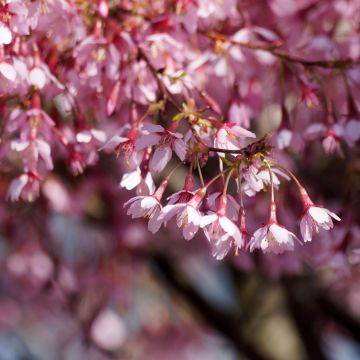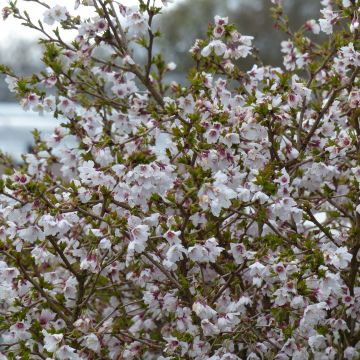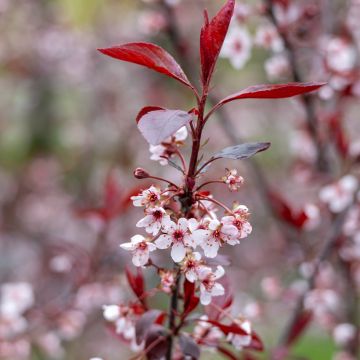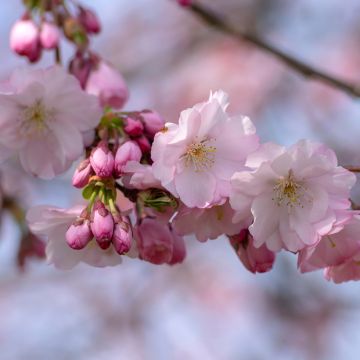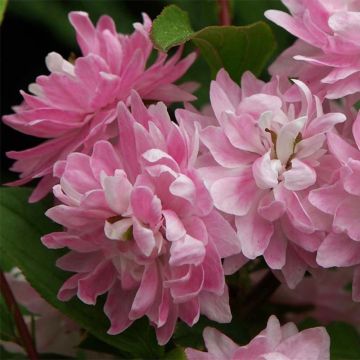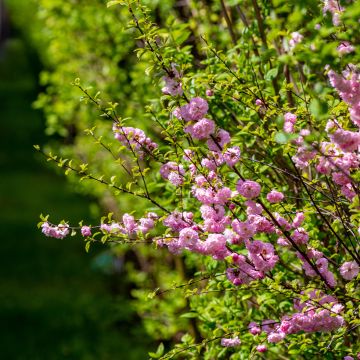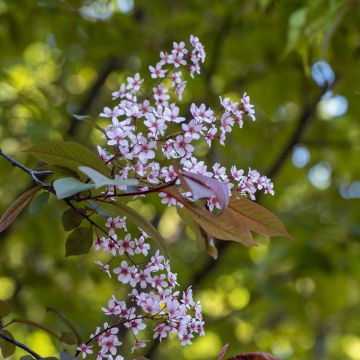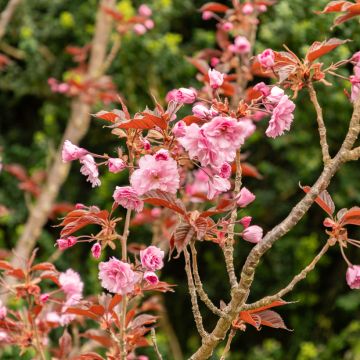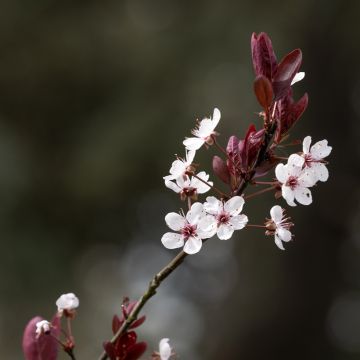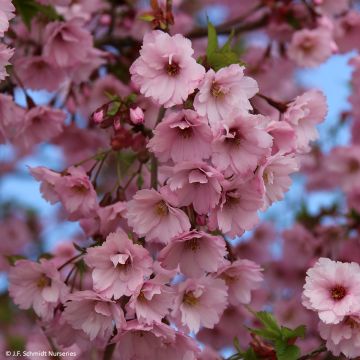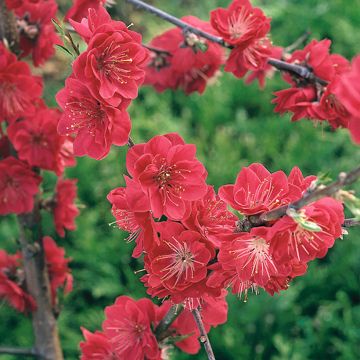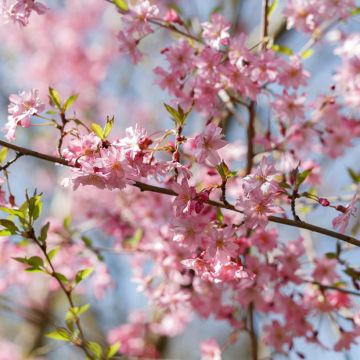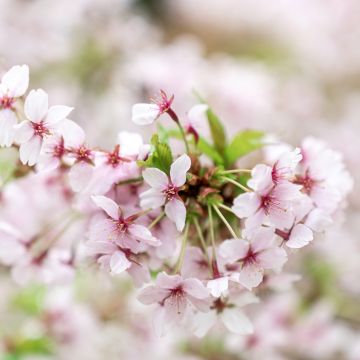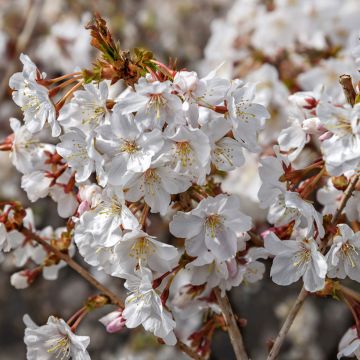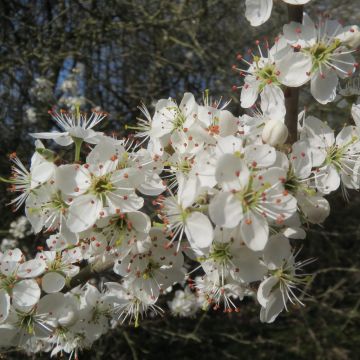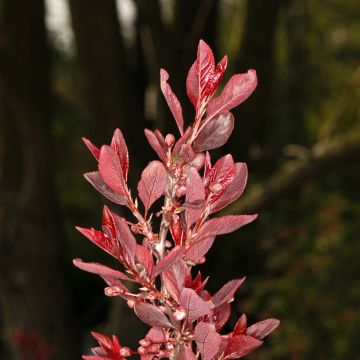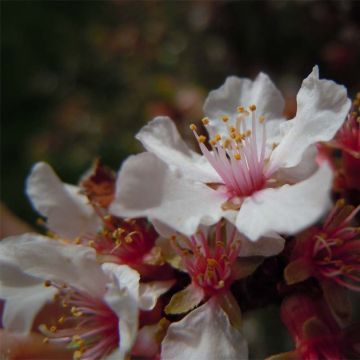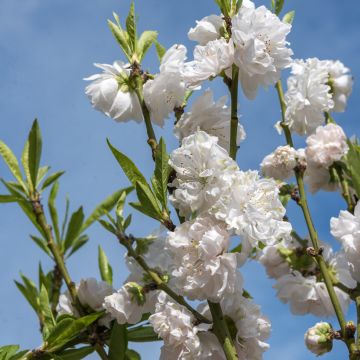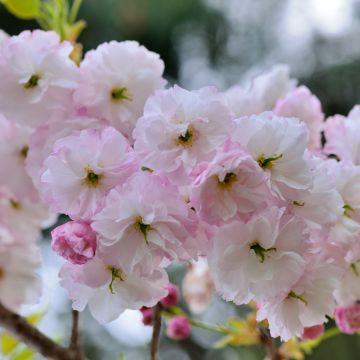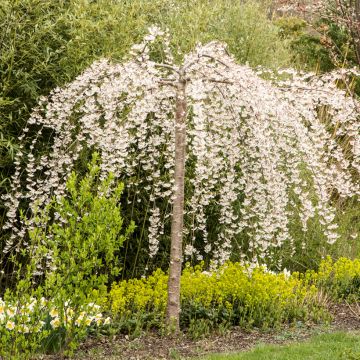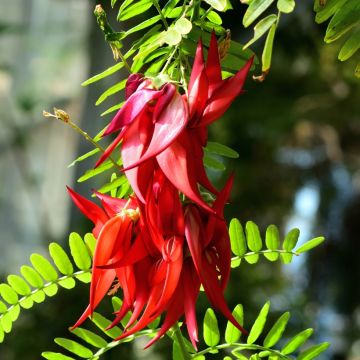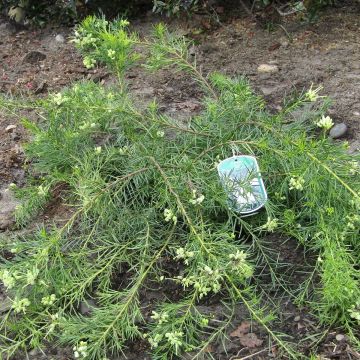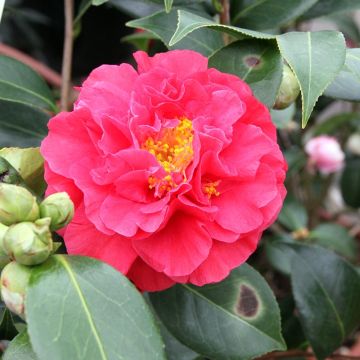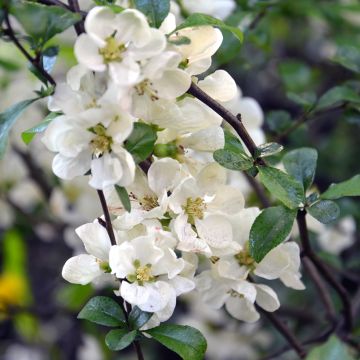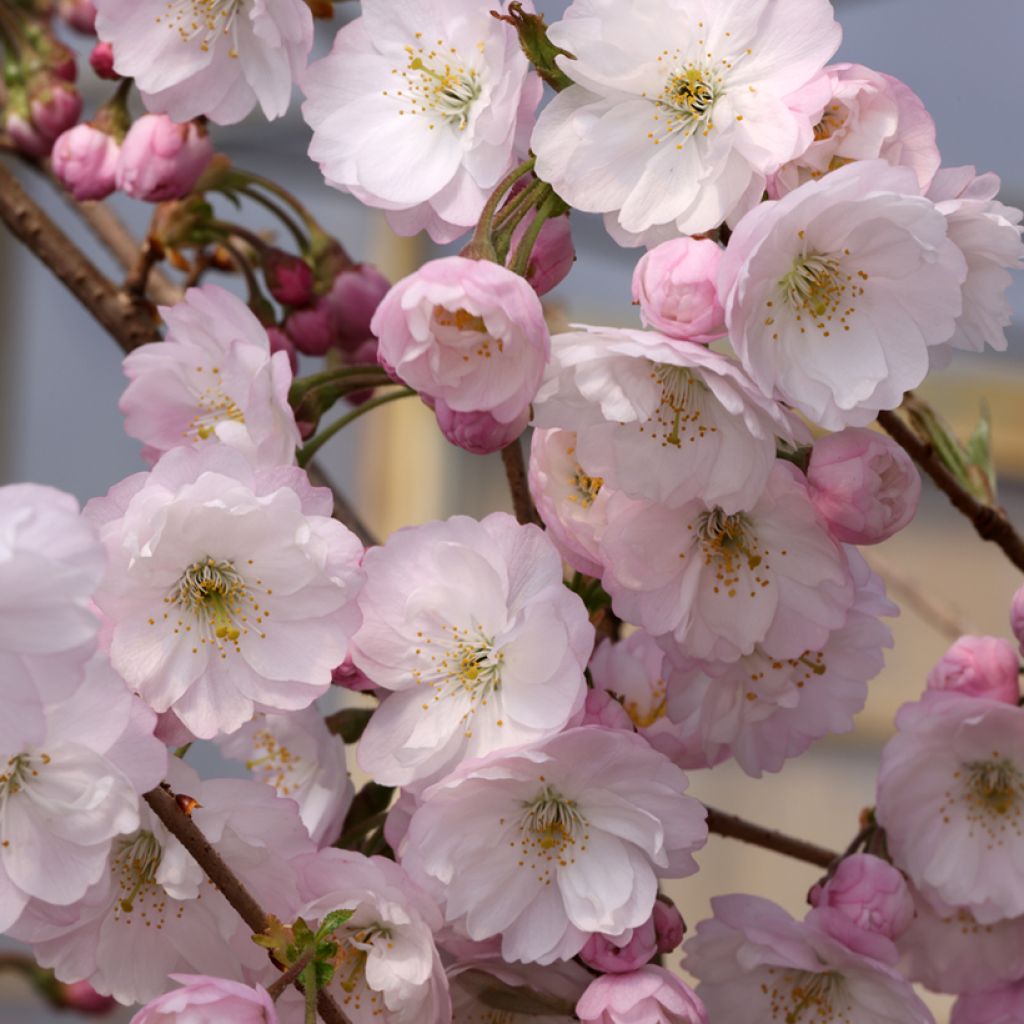

Prunus x subhirtella Dahlem - Autumn Cherry
Prunus x subhirtella Dahlem - Autumn Cherry
Prunus x subhirtella Dahlem
Autumn Cherry, Winter-flowering Cherry, Higan Cherry, Flowering cherry tree, Ornemental Cherry tree
Why not try an alternative variety in stock?
View all →Order in the next for dispatch today!
Dispatch by letter from €3.90.
Delivery charge from €5.90 Oversize package delivery charge from €6.90.
Current delivery delay: 1 day.
More information
This item is not available in your country.
Schedule delivery date,
and select date in basket
This plant carries a 24 months recovery warranty
More information
We guarantee the quality of our plants for a full growing cycle, and will replace at our expense any plant that fails to recover under normal climatic and planting conditions.
Oversize package: home delivery by special carrier from €6.90 per order..
Express home delivery from €8.90.
Does this plant fit my garden?
Set up your Plantfit profile →
Description
Prunus subhirtella 'Dahlem' is a variety of Japanese flowering cherry that is covered in semi-double pale pink flowers from the beginning of spring. It is a vigorous variety that ultimately forms a true small tree with a wide, open crown. Absolutely stunning in spring, this variety also offers beautiful yellow-orange autumn foliage. It looks magnificent when planted as a specimen in a corner of the garden or near a pond, and this cherry tree will be very charming next to a bench. You can enjoy its splendour while listening to the buzzing of the many bees attracted by its flowers.
Prunus x subhirtella 'Dahlem' is a horticultural variety of German origin, named after the German botanical garden Berlin-Dahlem. It is sometimes marketed under the names Prunus x subhirtella var. roseoplena or P. x subhirtella 'Plena'. This tree belongs to the large family of rosaceae, like all ornamental cherries (Prunus). It is commonly accepted today that Prunus x subhirtella is a spontaneous hybrid originating from East Asia. 'Dahlem' is a deciduous tree of medium growth rate, broader than tall, reaching an average height of 5.50 m with a spread of 6.50 m. It develops a fairly short trunk and a well-branched crown, slightly rounded when young, flattening and spreading with age. Flowering occurs in March-April depending on the region. The semi-double flowers are gathered in small clusters, suspended by a short peduncle. They emerge from light pink buds and then open into pale pink corollas measuring 2 to 2.5 cm. This variety does not produce fruit. The deciduous foliage appears in spring, coloured bronze. It consists of alternate, ovate leaves, measuring 3 to 8 cm long and 2 cm wide, coarsely toothed at the edges. The bright green leaf has a hairy underside. This foliage turns yellow-orange before falling in autumn. The bark is grey-brown, and the young shoots are brown and hairy.
The 'Dahlem' ornamental cherry is suitable for medium-sized gardens or large grounds. It fits well into a romantic setting, in Japanese style or in an English garden. Charming from the first fine days of spring, it will be particularly highlighted as a specimen or at the centre of a perennial bed where the flowers will take over from spring to summer. It is perfectly hardy and can be cultivated in many regions but dislikes overly clayey or dry soils. For example, it can be combined with other spring-flowering bushes, either simultaneously or staggered, such as ornamental apples, hawthorns, star magnolias, lilacs... A carpet of bluebells would look splendid at its base.
Report an error about the product description
Plant habit
Flowering
Foliage
Botanical data
Prunus
x subhirtella
Dahlem
Rosaceae
Autumn Cherry, Winter-flowering Cherry, Higan Cherry, Flowering cherry tree, Ornemental Cherry tree
Prunus x subhirtella var. roseoplena, Prunus x subhirtella 'Plena'
Cultivar or hybrid
Other Prunus
Planting and care
Prunus subhirtella 'Dahlem' thrives in full sun or partial shade in any sufficiently deep, moist, yet well-drained soil, preferably close to neutral (neither too acidic nor too chalky), not excessively wet, nor on the other hand excessively dry. Water only during unusually dry and hot weather. When planting, mix your soil with compost at a ratio of 50%. Dig a large planting hole. Every spring, apply a flowering shrub fertiliser. It is advisable to place the prunus in a spot sheltered from dry and cold winds to enjoy its early flowering.
Planting period
Intended location
Care
This item has not been reviewed yet - be the first to leave a review about it.
Spring-flowering shrubs
Haven't found what you were looking for?
Hardiness is the lowest winter temperature a plant can endure without suffering serious damage or even dying. However, hardiness is affected by location (a sheltered area, such as a patio), protection (winter cover) and soil type (hardiness is improved by well-drained soil).

Photo Sharing Terms & Conditions
In order to encourage gardeners to interact and share their experiences, Promesse de fleurs offers various media enabling content to be uploaded onto its Site - in particular via the ‘Photo sharing’ module.
The User agrees to refrain from:
- Posting any content that is illegal, prejudicial, insulting, racist, inciteful to hatred, revisionist, contrary to public decency, that infringes on privacy or on the privacy rights of third parties, in particular the publicity rights of persons and goods, intellectual property rights, or the right to privacy.
- Submitting content on behalf of a third party;
- Impersonate the identity of a third party and/or publish any personal information about a third party;
In general, the User undertakes to refrain from any unethical behaviour.
All Content (in particular text, comments, files, images, photos, videos, creative works, etc.), which may be subject to property or intellectual property rights, image or other private rights, shall remain the property of the User, subject to the limited rights granted by the terms of the licence granted by Promesse de fleurs as stated below. Users are at liberty to publish or not to publish such Content on the Site, notably via the ‘Photo Sharing’ facility, and accept that this Content shall be made public and freely accessible, notably on the Internet.
Users further acknowledge, undertake to have ,and guarantee that they hold all necessary rights and permissions to publish such material on the Site, in particular with regard to the legislation in force pertaining to any privacy, property, intellectual property, image, or contractual rights, or rights of any other nature. By publishing such Content on the Site, Users acknowledge accepting full liability as publishers of the Content within the meaning of the law, and grant Promesse de fleurs, free of charge, an inclusive, worldwide licence for the said Content for the entire duration of its publication, including all reproduction, representation, up/downloading, displaying, performing, transmission, and storage rights.
Users also grant permission for their name to be linked to the Content and accept that this link may not always be made available.
By engaging in posting material, Users consent to their Content becoming automatically accessible on the Internet, in particular on other sites and/or blogs and/or web pages of the Promesse de fleurs site, including in particular social pages and the Promesse de fleurs catalogue.
Users may secure the removal of entrusted content free of charge by issuing a simple request via our contact form.
The flowering period indicated on our website applies to countries and regions located in USDA zone 8 (France, the United Kingdom, Ireland, the Netherlands, etc.)
It will vary according to where you live:
- In zones 9 to 10 (Italy, Spain, Greece, etc.), flowering will occur about 2 to 4 weeks earlier.
- In zones 6 to 7 (Germany, Poland, Slovenia, and lower mountainous regions), flowering will be delayed by 2 to 3 weeks.
- In zone 5 (Central Europe, Scandinavia), blooming will be delayed by 3 to 5 weeks.
In temperate climates, pruning of spring-flowering shrubs (forsythia, spireas, etc.) should be done just after flowering.
Pruning of summer-flowering shrubs (Indian Lilac, Perovskia, etc.) can be done in winter or spring.
In cold regions as well as with frost-sensitive plants, avoid pruning too early when severe frosts may still occur.
The planting period indicated on our website applies to countries and regions located in USDA zone 8 (France, United Kingdom, Ireland, Netherlands).
It will vary according to where you live:
- In Mediterranean zones (Marseille, Madrid, Milan, etc.), autumn and winter are the best planting periods.
- In continental zones (Strasbourg, Munich, Vienna, etc.), delay planting by 2 to 3 weeks in spring and bring it forward by 2 to 4 weeks in autumn.
- In mountainous regions (the Alps, Pyrenees, Carpathians, etc.), it is best to plant in late spring (May-June) or late summer (August-September).
The harvesting period indicated on our website applies to countries and regions in USDA zone 8 (France, England, Ireland, the Netherlands).
In colder areas (Scandinavia, Poland, Austria...) fruit and vegetable harvests are likely to be delayed by 3-4 weeks.
In warmer areas (Italy, Spain, Greece, etc.), harvesting will probably take place earlier, depending on weather conditions.
The sowing periods indicated on our website apply to countries and regions within USDA Zone 8 (France, UK, Ireland, Netherlands).
In colder areas (Scandinavia, Poland, Austria...), delay any outdoor sowing by 3-4 weeks, or sow under glass.
In warmer climes (Italy, Spain, Greece, etc.), bring outdoor sowing forward by a few weeks.




































